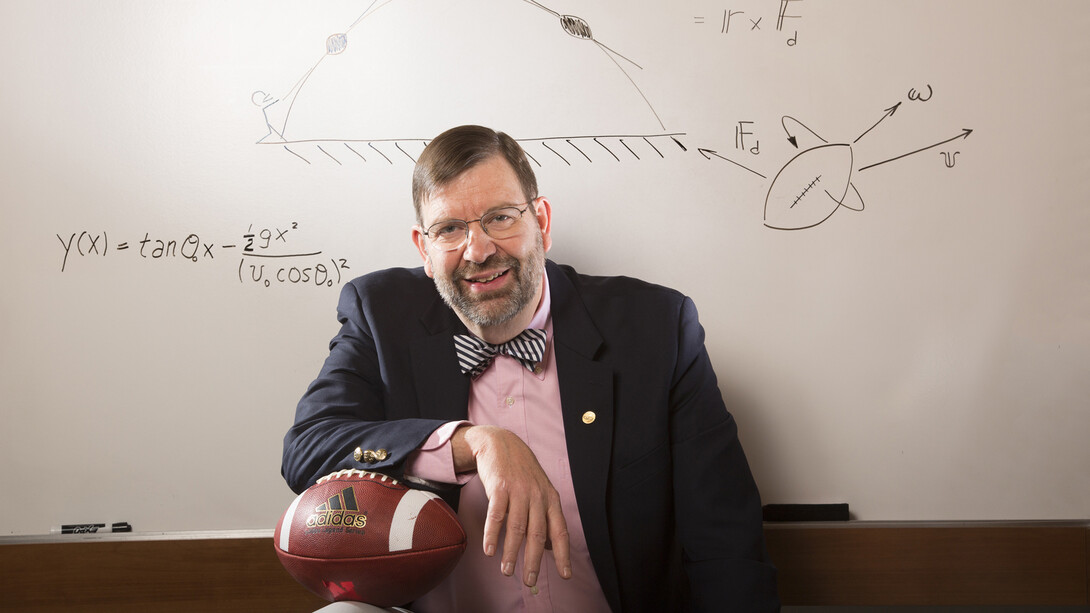
With Super Bowl LVIII days away, the University of Nebraska–Lincoln’s Tim Gay was featured on a Feb. 7 episode of NPR’s “Short Wave” podcast that delved into a longtime mystery of football physics he helped explain: On a deep, well-thrown pass, why does the front tip of a football follow the ball’s trajectory, so that it points upward when launched but downward by the time it reaches a receiver?
Gay, Willa Cather Professor of physics and author of “Football Physics: The Science of the Game,” was first intrigued by the tight-spiral conundrum when asked about it by friend and Nobel Laureate Bill Phillips following a lecture Gay delivered in 2000.
“I have been to enough meetings with Bill that I knew that if he stood up and asked a question, the speaker had probably screwed something up,” Gay told NPR. “So I was a little petrified.”
Gay racked his brain for an answer but finally said, “I have no idea!” Thus, a 20-year quest began.
Gay found papers on the subject, NPR reported, but none of them told the whole story. He enlisted the help of two other physicists, Richard Price at the Massachusetts Institute of Technology and William Moss at Lawrence Livermore National Laboratory.
“We spent the next three years yelling at each other over Zoom about the problem,” the Husker physicist said.
One day, Gay began to wonder about torque, or how much a force makes an object rotate. In a forward pass, “it seems to be causing the ball to tilt down,” he said.
After theoretical calculations and computer simulations, the researchers determined that the answer lay in the combination of air resistance and the gyroscope effect. A paper detailing the findings was published in September 2020 as an Editor’s Selection in the American Journal of Physics. Learn more about the study here.
Learn more about the Department of Physics and Astronomy.
Nebraska Headliners highlights Husker faculty and staff featured in major news outlets. If you see a possible Nebraska Headliner, submit the story or URL via email to nebraskatoday@unl.edu.







